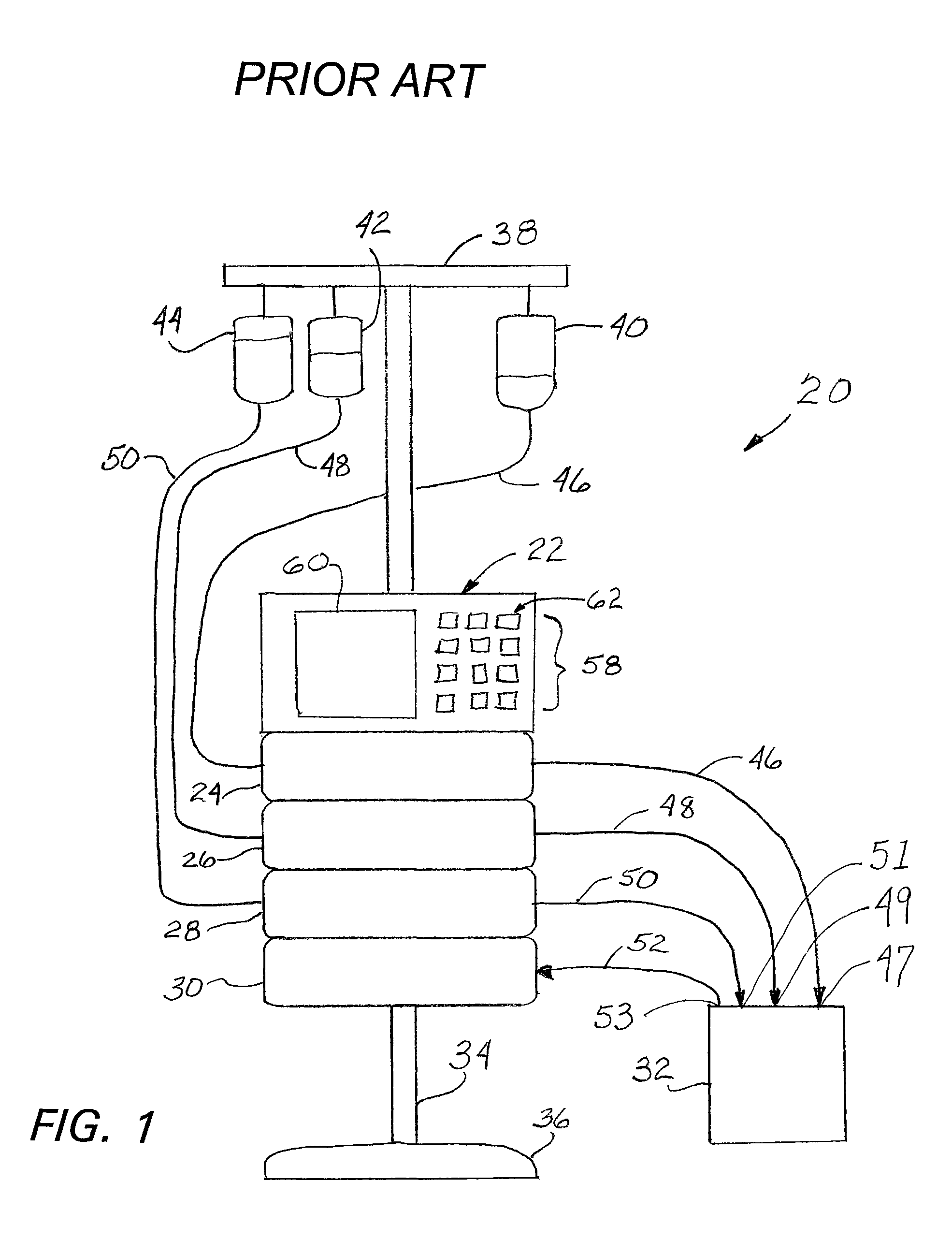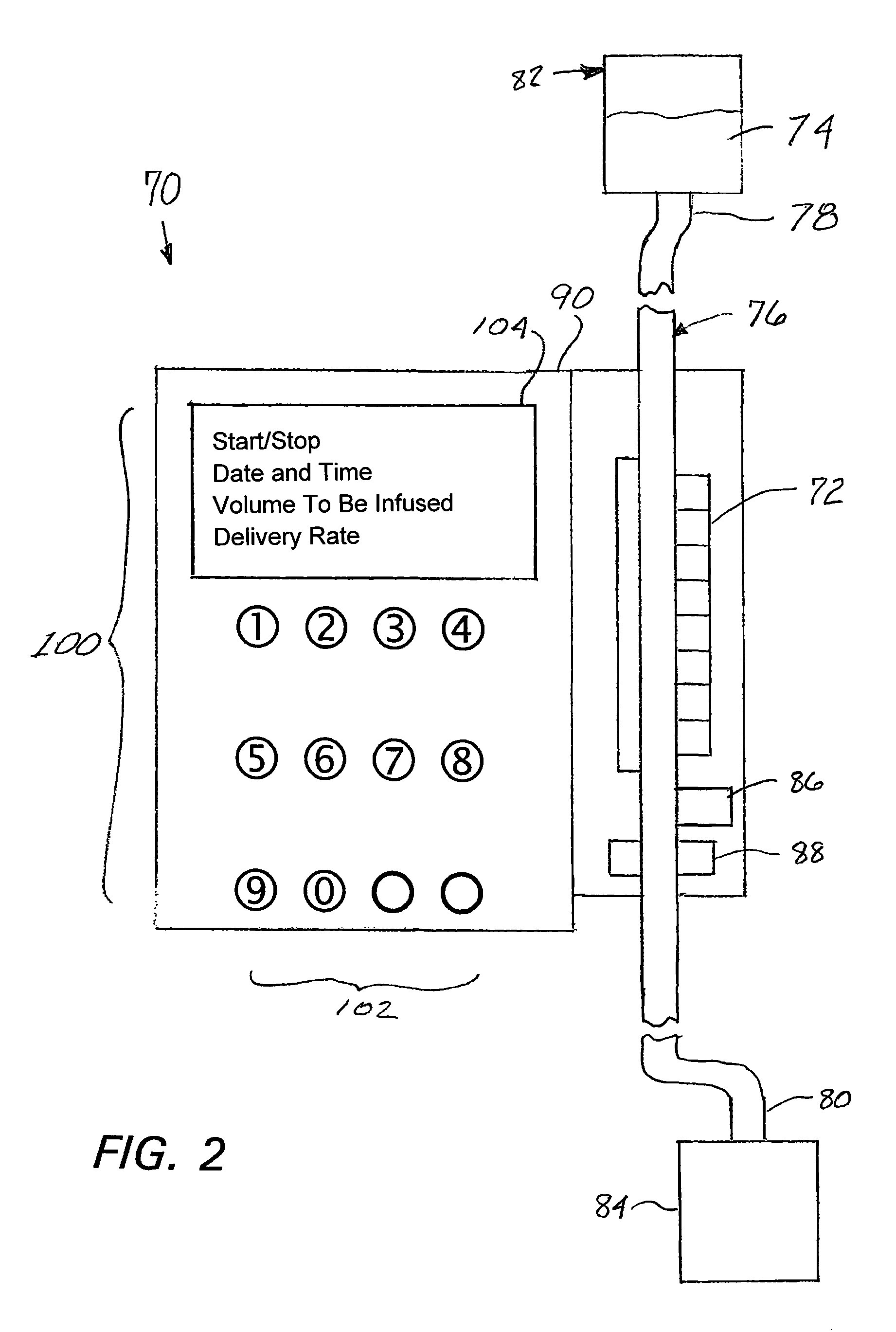Over the years as processors have evolved with increased capability, faster speeds, and reduced cost, infusion pumps, as well as many other medical devices that deliver medical treatment to patients, have incorporated these processors and have become more complex with many more features made available.
In addition, some of the drugs used in these environments are not directly compatible with each other and therefore need to be infused into the patient at different points of the body.
The number of pumping modules, the complexity of the infusion programs that can be applied for each one, each program of which may differ from the others, and the number and complexity of patient monitors can generate a large amount of data for a central controller to process, and in some cases, can cause data programming and monitoring overloads.
Even with single channel devices, the complexity of monitoring and controlling the device has created a time management issue when the user interface is added to the activities being controlled and responded to by the processor.
Adding multiple channels just increases the probability of time management issues.
This can result in a large data processing load for the CMU.
Complex central management units having a high data processing load are undesirable in clinical situations due to the possibility that a data overload may occur in which the processor is unable to timely process all data and output instructions.
Shutdowns of the CMU and its pump modules can occur unpredictably with the result that the patient does not receive the medication at the desired time unless the system can be reset and restarted immediately or a replacement system can be located and programmed immediately.
The same shutdown can happen in a single-channel pump where the processor becomes overwhelmed by complex programming and data processing requests.
Additionally, adverse drug events (“ADE”) defined as injuries involving a drug that require medical intervention, which are a subset of medication errors, represent some of the most serious medication errors, and are responsible for a number of patient injuries and death.
These devices are predominantly used to verify the administration of oral, intramuscular (“IM”), subcutaneous, and topical drugs and have limited capability in verifying the administration of intravenous (“IV”) drugs.
While these systems also have advanced the art significantly, infusion data processing and programming errors continue to be a problem.
For example, even where the medication order includes the correct infusion parameters and those parameters are correctly entered into an infusion pump, a data overload of the pump's processor or a remote centralized processor may cause the pump to stop administering the medication to the patient, thus causing a delivery error to the patient.
As briefly mentioned above, very complex pumping programs can be generated in the care and treatment of patients.
Although conventional drug infusion controllers have greatly improved the efficiency and ease with which medications are delivered to a patient, complex pumping programs, and the data produced from them, can reach the limits of certain processors.
Data overloads are possible and their occurrence is not predictable.
The processor is “highly” taxed and when multiple requests are made of the device, changing delivery parameters occur, complex algorithms are running, single fault failure timing is in place, etc., devices on the market are shutting down without alarm conditions in some instances.
The issue is the defined frequency of monitoring and control interface with the pump while also needing to recognize and respond to the user interface.
For example, certain pharmacokinetic models can require very complex infusion programs.
Such PK systems are attractive for certain therapy, but require a large amount of programming, data manipulation, and control.
Open-loop medication delivery control methods can achieve the specified plasma drug concentration, but a relatively complex medication delivery program is incorporated.
If all the above is performed by an infusion pump, or by a system of pumps with a central controller, significant data processing loads can occur for the processor or processors involved.
Should such data loads exceed the processor's capability, a shut-down may occur and the therapy could be delayed.
It has been recognized that infusion pump designs currently on the market present potential safety issues.
Their justification for the initiative is that the number of recalls and potentially understated number of safety events involving infusion pumps are too high.
This master / slave model can result in conflicts between the master processor's need to perform specific system checks and the user's demand for the master processor to process instructions being provided by the user.
To clarify the above problem through a comparison to another high data load system, video game programmers are faced with the same problem in that as the console game program begins to utilize too high a percentage of the processor's capacity, the “super user” begins to see slight delays in the video updates (for example, characters begin to freeze in place on the screen).
The exception is that with the IV pump, the super user sees an error code or a potential programming error.
Complexities of pump programming are not supported with the user interface screens provided with the feature-enhanced infusion pumps currently on the market.
Numerical keypads have a similar data entry error rate regardless of the style of keypad used.
This added with the human factor of confirmation bias (humans tend to fail to check closely when asked to confirm) results in some level of over- or under-infusion of the solution (drug).
The potential errors associated with multiple functions for the same key potentially increase the error rates experienced as practitioners move from one patient population to another.
The infusion pumps do not support easy readability during operation.
This is especially true when multiple channels are operating and an error condition is detected.
Alarms sound and delivery stops or is affected as a result of the error conditions.
This condition is further complicated when the practitioner attempts to clear the error condition at the CMU and incorrectly takes action on channels not affected by the error condition.
No infusion pump currently on the market known to the inventors was designed to address the specific needs of anesthesia.
No infusion pump currently on the market addresses the specific needs of the neonatal intensive care patient population.
 Login to view more
Login to view more  Login to view more
Login to view more 


